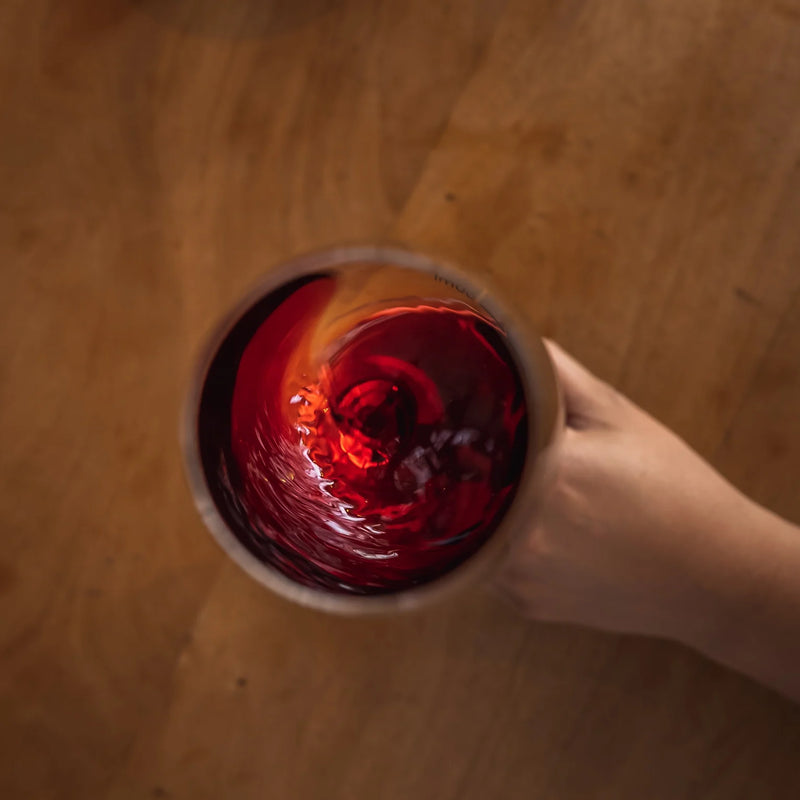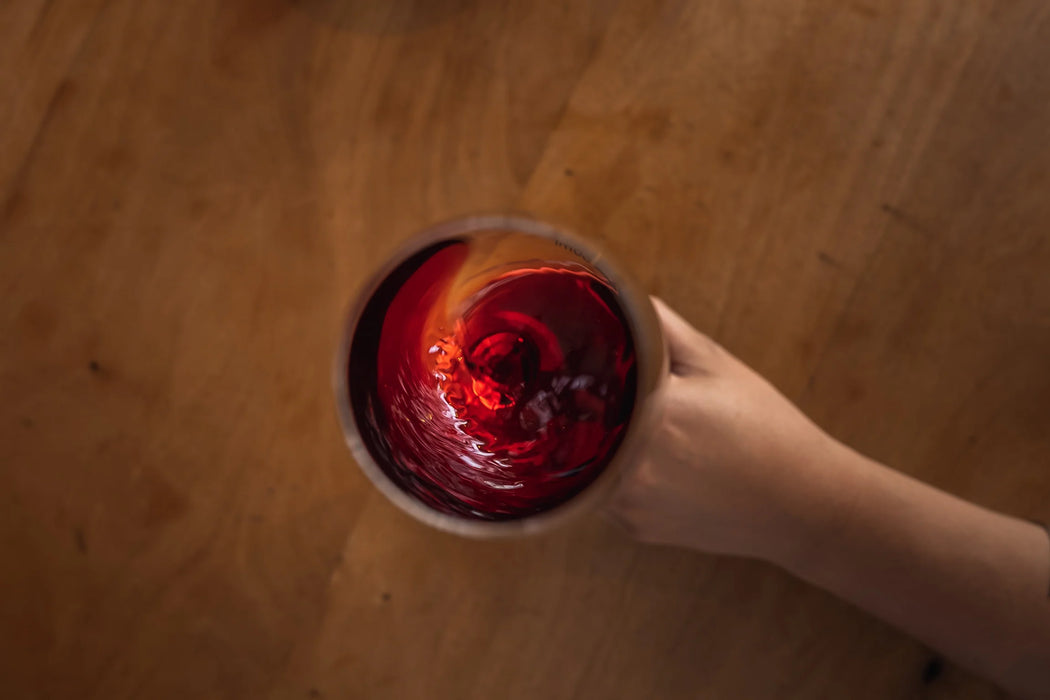
Malbec
mal-bek
Origin: Cahors Grape: Malbec (purple grape variety with thin skin) Flavors: Red Plum, Blackberry, Vanilla, Sweet Tobacco, Cocoa Notable Regions: Cahors, Argentina, Chile Sweetness: Dry Body: Full Tannins: Medium Acidity: Medium-Low ABV: 13.5-15%
The History of Malbec
Malbec is a grape variety that originated in France, where it was primarily used as a blending grape to make Bordeaux for many years. While the grape had excellent potential to be made into the pure Malbec wine we know and love today, only one region, Cahors, historically did so.
Malbec is now considered one of the most popular red wines on the market. However, it was not until relatively recently that the varietal became a regular export outside France. This was due, in part, to the grape’s vulnerability to disease and rot.
Malbec did not respond well to France's climate, and winemakers began planting less of the grape for fear of giving up land to crops that could easily die. Instead, they planted just enough to add to a red blend if the grape did end up surviving the growing season.
Rebirth In Argentina
Fortunately, Malbec found a new life in Argentina. The grape was first introduced to the region in the mid-19th century when provincial governor Domingo Faustino Sarmiento asked French agronomist Miguel Pouget to bring grapevine cuttings from France to Argentina.
Among the vines that Pouget brought were the very first Malbec vines planted in the country, primarily in Mendoza. Because of the region’s hot weather and high altitude, the Malbec vines thrived, exhibiting none of the weakness they had died from in France. This is why Argentinian Malbec and French Malbec have distinctly different tastes, still to this day.
Nearly 100 years after its first planting in Argentina, Malbec remained a wine consumed within its borders, with very little being exported. Then, in the early 2000s, the state of the world economy caused all red wine prices to rise, including the price of wine made in Europe and the United States.
Many Americans started looking for an affordable and delicious alternative to their classic Cabernet and Pinot Noir — thus, the time for Malbec had arrived.
In this way, Malbec was not discovered by wine experts but by regular wine drinkers. Because of this populist appeal, Malbec is now considered Argentina’s most important grape variety, and the country is now home to nearly 70 percent of all Malbec vineyards in the world. As of 2003, there were over 50,000 acres of Malbec in Argentina.
Malbec Taste and Flavor
The key to the popularity of Malbec lies in how easy it is to drink and how well it goes with or without food. Malbec is often referred to as the working man’s Merlot, as the wine has many of the same characteristics that make Merlot easy to drink, with an added spice and acidity that makes it seem less polished.
There is a dramatic difference in taste between Argentinian Malbec and French Malbec, which shows the extent to which terroir can influence a wine. Terroir encompasses all of the regional factors that define the taste of a wine grape, including sun, soil, climate, weather, altitude, and proximity to water.
Argentinian Malbec
The main fruit flavors of Argentinian Malbec are blackberry, plum, and black cherry. The nuanced flavors offer milk chocolate, cocoa powder, violet flowers, leather, and, depending on the amount of oak aging, a sweet tobacco finish.
French Malbec
While Argentinian Malbec is fruit-forward, French Malbec is quite the opposite. Produced in Cahors, the wine is leathery, with flavors of tart, black plum, and savory bitterness. French Malbec has higher acidity, attributed to black pepper and spice flavors. Because of its moderate tannin and acidity with lower alcohol, French Malbec tends to age longer.
Fun fact: During blind taste tests, one of Malbec's classic “tells” is the wine’s bright magenta rim and opaque purple color.
Malbec Food Pairings
Because Malbec is a full-bodied red wine, it pairs well with full-flavored foods. However, unlike Cabernet Sauvignon, the wine does not have a long finish or aggressive tannins.
Therefore, it will pair nicely with leaner red meat and even lighter cuts like dark meat turkey or roasted pork. It also pairs deliciously with pepper, sage, creamy mushroom sauces, and melted cheese.
The Best Malbec Food Pairings
- Meat: Malbec holds up well with dark meat poultry, roasted pork, and leaner cuts of red meat, such as sirloin, flap, hanger, filet, and skirt steak. If you like more exciting meats, you’ll be surprised by how well the fruit flavors of Malbec can complement more gamey and earthy meat cuts, such as buffalo burgers, ostrich burgers, or venison.
- Cheese: Malbec is one of the few bold red wines that consistently pairs well with blue cheese and other pungent, soft cheeses. You will also be delighted with Monterey Jack, provolone, and even melted Swiss cheese. When pairing Malbec with cheese, the key is to recognize that the wine’s finish is not extremely long, so a cheese without a long, lingering taste is generally a good match.
- Spices and Herbs: Look for spices that have earthy or smoky flavors, such as parsley, sumac, thyme, rosemary, smoked paprika, black pepper, cumin, clove, garlic, shallot, green onion, and barbeque sauce.
- Vegetables: Mushrooms, roasted vegetables, green and red bell peppers, potatoes, arugula, kale, grilled endive, onions, beets, lentils, black beans, and forbidden black rice all pair well with Malbec.
Food Pairings to Avoid with Malbec
As with most full-bodied red wines, avoiding bitter greens, fish, and vinaigrette salads might be a good idea. This is because bitter greens will make the wine taste more bitter, fish will linger on your palate and upset the taste, and acidic salads will make the wine taste more flat.
Try An Easy-Drinking Glass Of Red Wine With Malbec
To recap, Malbec is a full-bodied red wine that originated in France but grows mainly in Argentina. While French Malbec is more savory and tart, with firm tannins and flavors of plum and leather, Argentinian Malbec is more fruit-forward, with a velvety texture and flavors of cocoa and plum.
Compared to the vast array of red wines, Malbec is comparatively affordable and delicious, pairing well with lean meats and soft, pungent cheeses. If you’re serving red wine to a diverse group, Malbec is always a safe, crowd-pleasing bet.








